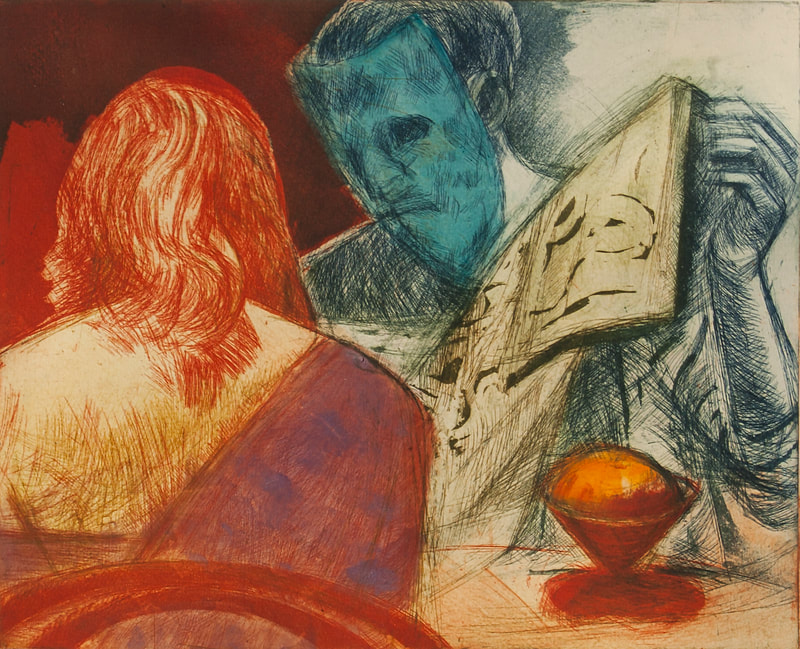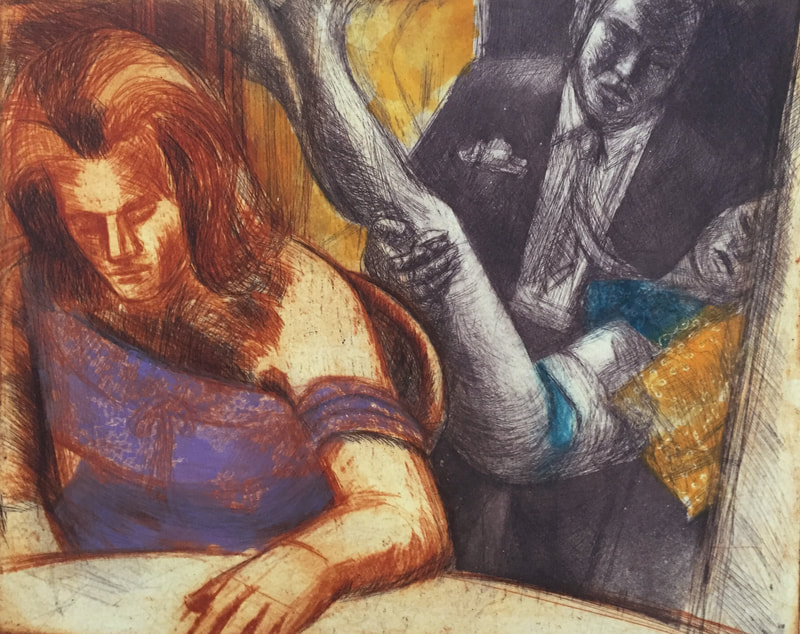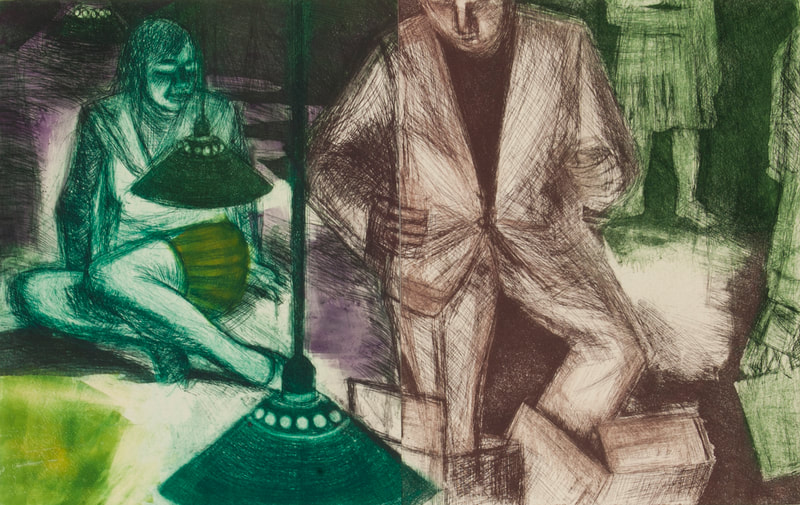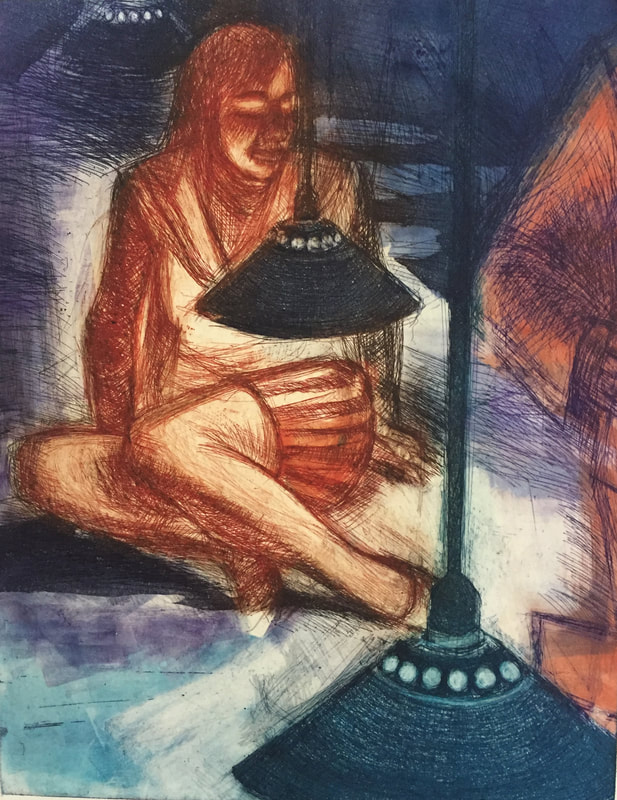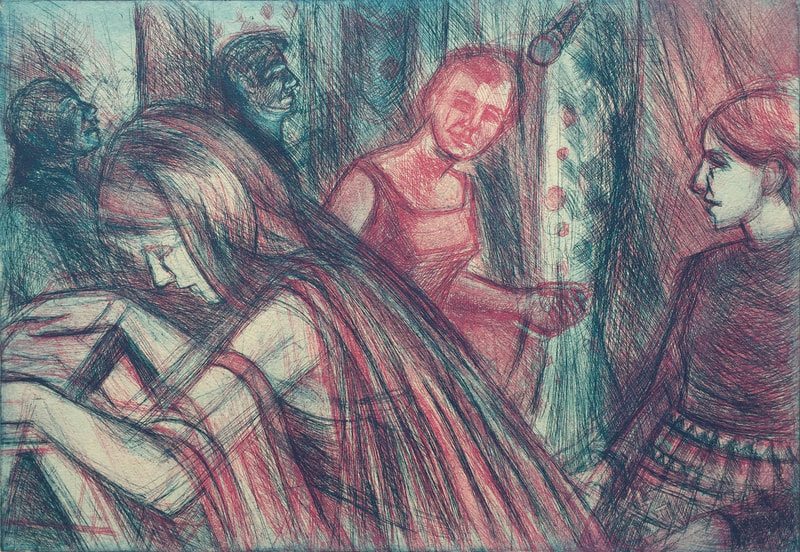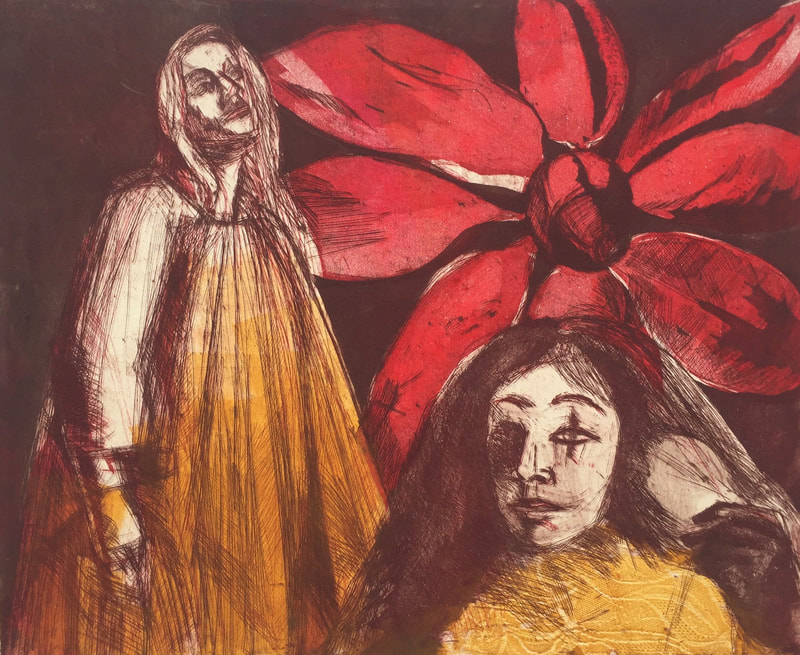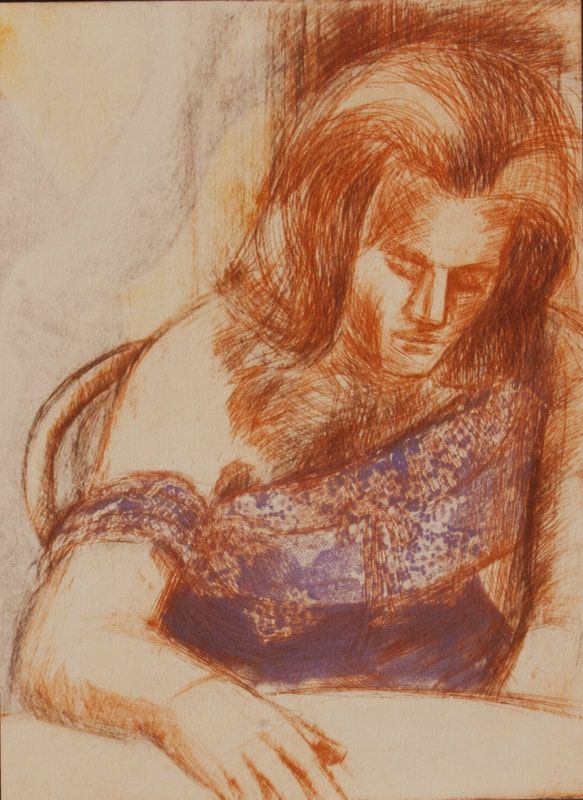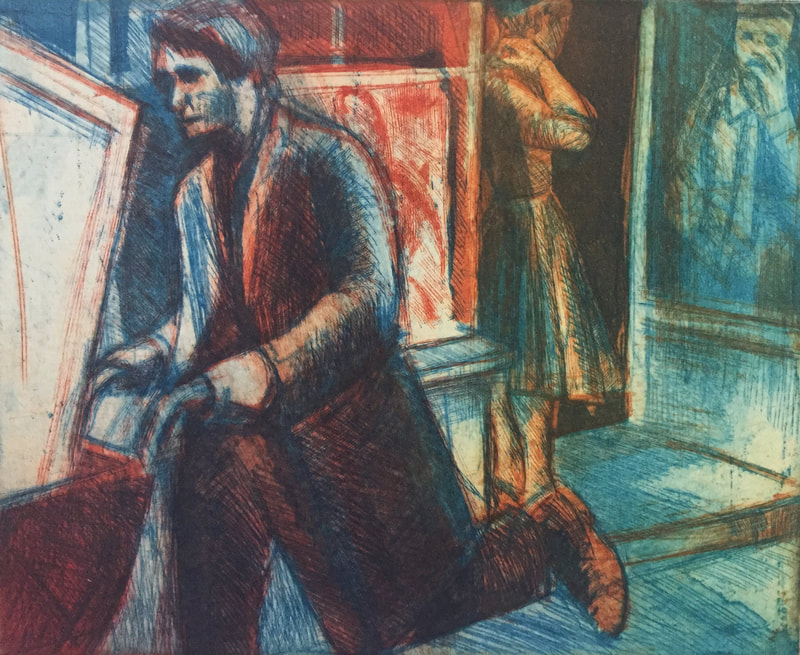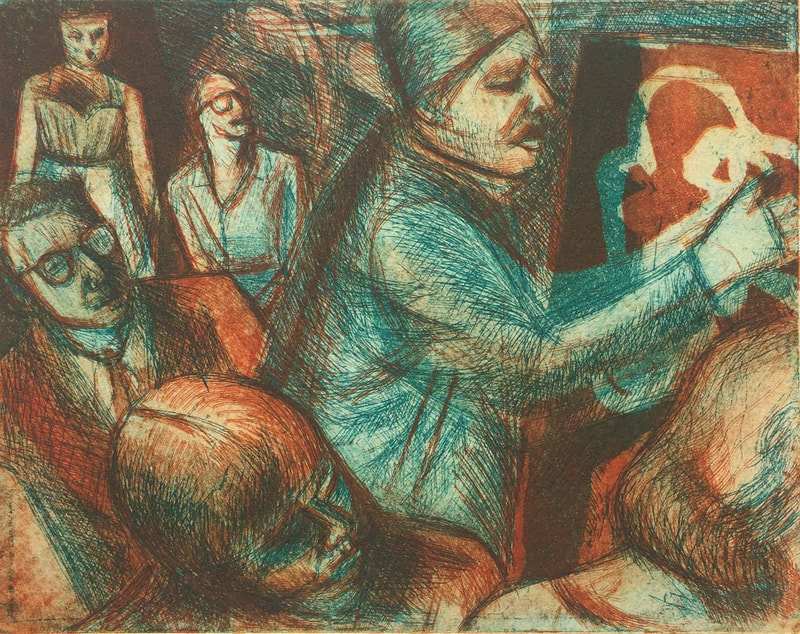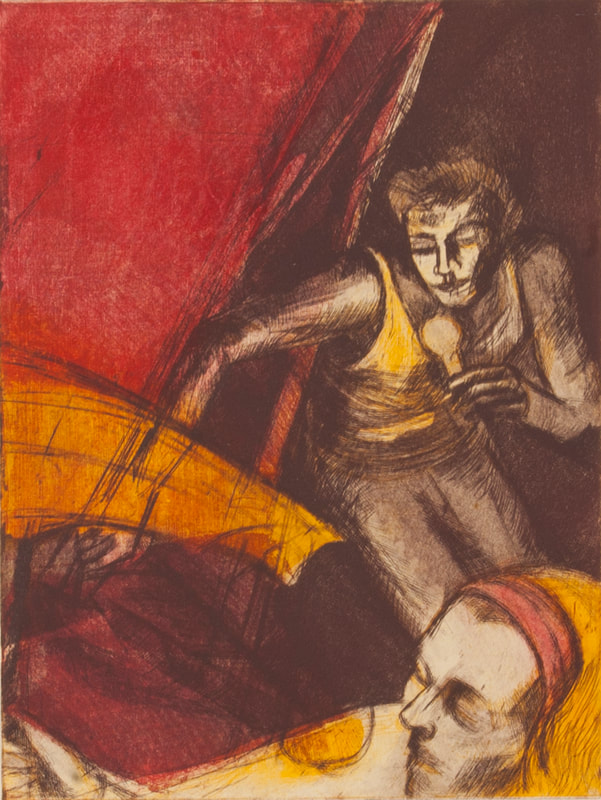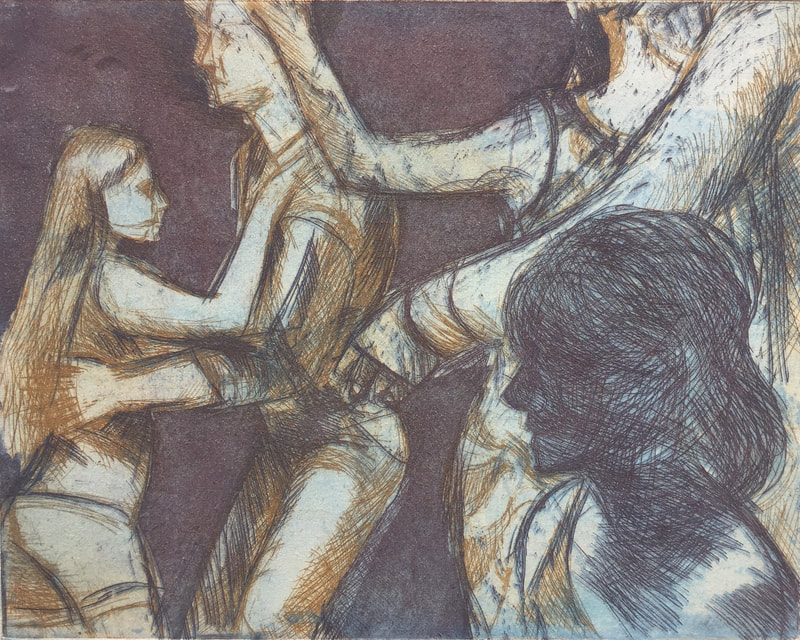Artist Statement
Performers and the Audience are a recurring theme and metaphor in my work. Although I reference the period photographs of the Happenings by Robert R. McElroy, and juxtapose elements from different performances, these works are first and foremost, constructed figure compositions with their own original narratives. In these color etchings, I seek to honor a world that no longer exists, the close knit community of 1960’s Downtown New York City artists, and to celebrate the irreverent, ironic, collaborative spirit of the Happenings. In the gritty makeshift spaces where the Happenings took place; warehouses, lofts and downtown galleries, there was no stage, no backstage for storage. The audience and performers inhabited the same space, and there was no attempt to create an illusion of reality in the performers’ choice of crudely crafted props and costumes, (tin foil mask, rag dress, or fabric flower), adding to the irony and absurd content of the performance. Although the Happenings followed scripts and stage directions, spontaneity and an open ended format prevailed. These elements contributed to the blurring of the distinction between performer and audience and raise questions of what constitutes art.
I am a painter by training and it is only in the last five years that I have become a dedicated printmaker. In 2014, my first show at the Bowery Gallery explored the process of the Color Reduction Woodcut. In 2015 I embarked on a new artistic exploration, multiple plate color etchings. At first, I found the reverse image presented an obstacle, a set back. I now look forward to see what the reverse image reveals. As I pull the paper from the plate, I see unexpected dramatic possibilities in light and space and experience the revelation of the subconscious relationships between the figures. It is a process of discovery where the printed image leads the way.
I originally found the copper plate to be a rigid and fixed surface. I now regard the plate as flexible, no different from a canvas. Areas are scraped, and figures are redrawn, or erased. As I unearth the narrative and space, plates are added to form diptychs and triptychs, as the story unfolds. The color etchings in Homage to the Happenings utilize multiple plates and the overlap of cross -hatching and aquatint increase color resonance and range. In the printing of the final print, each plate is run through the press several times, with rollers used to apply additional color and pattern, making each print unique.
Rachel Siporin
I am a painter by training and it is only in the last five years that I have become a dedicated printmaker. In 2014, my first show at the Bowery Gallery explored the process of the Color Reduction Woodcut. In 2015 I embarked on a new artistic exploration, multiple plate color etchings. At first, I found the reverse image presented an obstacle, a set back. I now look forward to see what the reverse image reveals. As I pull the paper from the plate, I see unexpected dramatic possibilities in light and space and experience the revelation of the subconscious relationships between the figures. It is a process of discovery where the printed image leads the way.
I originally found the copper plate to be a rigid and fixed surface. I now regard the plate as flexible, no different from a canvas. Areas are scraped, and figures are redrawn, or erased. As I unearth the narrative and space, plates are added to form diptychs and triptychs, as the story unfolds. The color etchings in Homage to the Happenings utilize multiple plates and the overlap of cross -hatching and aquatint increase color resonance and range. In the printing of the final print, each plate is run through the press several times, with rollers used to apply additional color and pattern, making each print unique.
Rachel Siporin
©2022 Rachel Siporin
